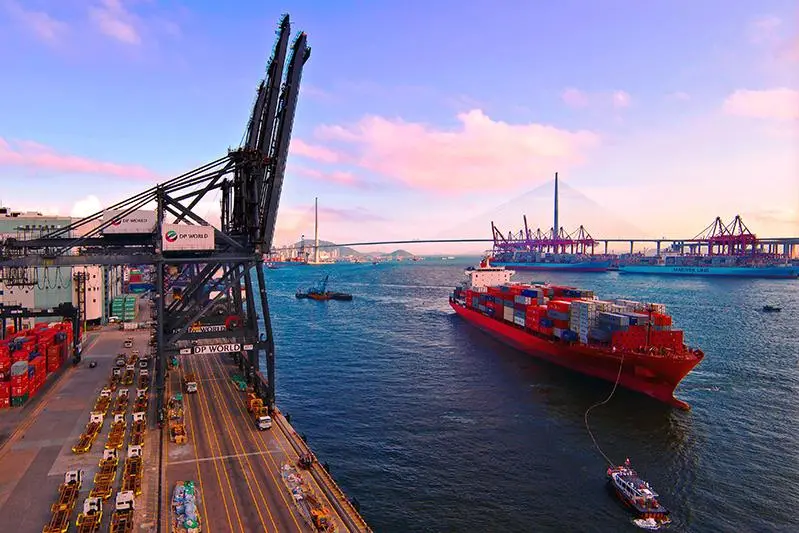PHOTO
GENEVA: The resurgence of global economic activity in the first half of 2021 lifted merchandise trade above its pre-pandemic peak, leading WTO economists to upgrade their forecasts for trade in 2021 and 2022, The World Trade Organisation is now predicting global merchandise trade volume growth of 10.8% in 2021 up from 8.0% forecasted in March followed by a 4.7% rise in 2022. Growth should moderate as merchandise trade approaches its pre-pandemic long-run trend. Supply-side issues such as semiconductor scarcity and port backlogs may strain supply chains and weigh on trade in particular areas, but they are unlikely to have large impacts on global aggregates. The biggest downside risks come from the pandemic itself.
Behind the strong overall trade increase, however, there is significant divergence across countries, with some developing regions falling well short of the global average.
"Trade has been a critical tool in combatting the pandemic, and this strong growth underscores how important trade will be in underpinning the global economic recovery," Director-General Ngozi Okonjo-Iweala said in a statement Monday.
"But inequitable access to vaccines is exacerbating economic divergence across regions. The longer vaccine inequity is allowed to persist, the greater the chance that even more dangerous variants of COVID-19 will emerge, setting back the health and economic progress we have made to date." "As we approach the 12th Ministerial Conference, members must come together and agree on a strong WTO response to the pandemic, which would provide a foundation for more rapid vaccine production and equitable distribution. This is necessary to sustain the global economic recovery. Vaccine policy is economic policy - and trade policy," she said.
The large annual growth rate for merchandise trade volume in 2021 is mostly a reflection of the previous year's slump, which bottomed out in the second quarter of 2020. Due to a lower base, year-on-year growth in the second quarter of 2021 was 22.0%, but the figure is projected to fall to 10.9% in the third quarter and 6.6% in the fourth quarter, in part because of the rapid recovery in trade in the last two quarters of 2020. Reaching the forecast for 2021 only requires quarter-on-quarter growth to average 0.8% per quarter in the second half of this year, equivalent to an annualized rate of 3.1%.
Trade volume growth is set to be accompanied by market-weighted GDP growth of 5.3% in 2021 and 4.1% in 2022 (revised up from 5.1% and 3.8% previously). GDP growth has been spurred on by strong monetary and fiscal policy support, and by the resumption of economic activity in countries that have been able to deploy COVID-19 vaccines at scale.
The current trade projections imply that the ratio of trade growth to GDP growth will rise to 2.0:1 in 2021 before falling back to 1.1:1 in 2022. If the forecast is realized, this would indicate that the pandemic will not have had a fundamental structural impact on the relationship between world trade and income.
If the current forecast is realised, by the final quarter of 2022 Asia's merchandise imports will be 14.2% higher than they were in 2019. Over the same period, imports will have risen by 11.9% in North America, 10.8% in South and Central America, 9.4% in Europe, 8.2% in Africa, 5.7% in the Commonwealth of Independent States and 5.4% in the Middle East. Asia's exports will have grown 18.8% over that period, while all other regions will have recorded more modest increases: North America (8.0%), Europe (7.8%), CIS (6.2%), South America (4.8%), the Middle East (2.9%) and Africa (1.9%).
The forecast projects export volume growth in 2021 will be 8.7% in North America, 7.2% in South America, 9.7% in Europe, 0.6% in the CIS, 7.0% in Africa, 5.0% in the Middle East and 14.4% for Asia. Imports in the same year are set to grow by 12.6% in North America, 19.9% in South America, 9.1% in Europe, 13.1% in CIS, 11.3% in Africa, 9.3% in the Middle East and 10.7% in Asia. Exports and imports of LDCs will increase by an estimated 5.3% and 5.5%, respectively, in 2021.
As with the quarterly figures above, annual trade growth figures for 2021 are to a considerable extent a function of the decline suffered by each region in 2020. The pandemic's impact on trade is better illustrated by looking at cumulative growth over the two years from 2019 to 2021. If the second half of this year turns out as expected, world merchandise trade will be up 4.9% compared to 2019. Over that period, export growth will be -0.6% in North America, 2.2% in South America, 1.0% in Europe, -1.0% in the CIS, -2.4% in Africa, -7.2% in the Middle East and 14.7% in Asia. Meanwhile, import growth between 2019 and 2021 will be 5.7% in North America, 8.1% in South America, 0.8% in Europe, 7.5% in the CIS, -1.0% in Africa, -5.9% in the Middle East and 9.4% in Asia. For LDCs, the volume of merchandise exports will increase by 3.2% between 2019 and 2021, while their imports are set to decrease by 1.6% over the same interval. This divergence continues into the projections for 2022.
© Copyright Emirates News Agency (WAM) 2021.












